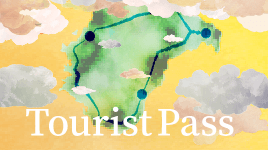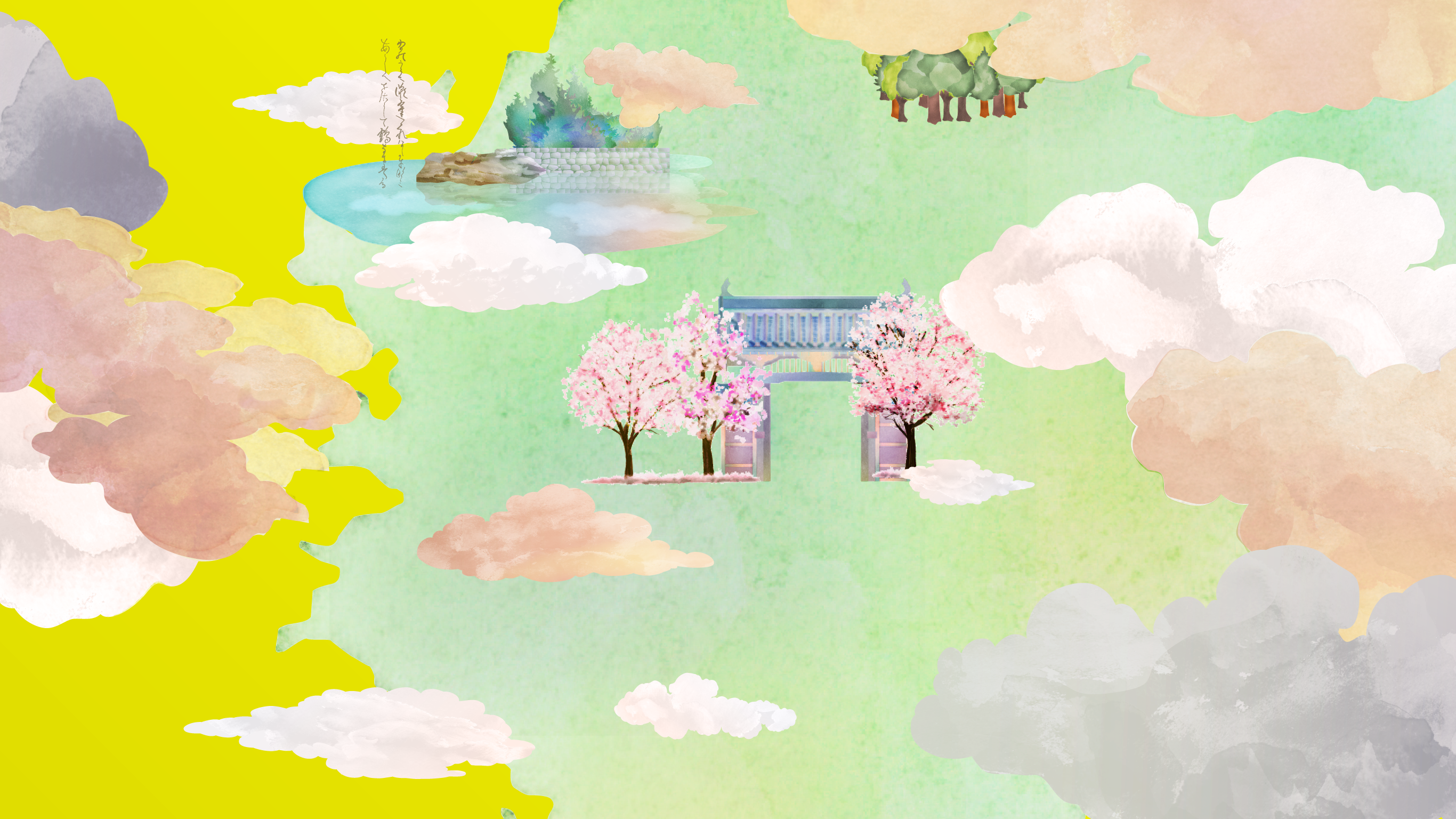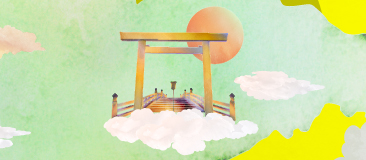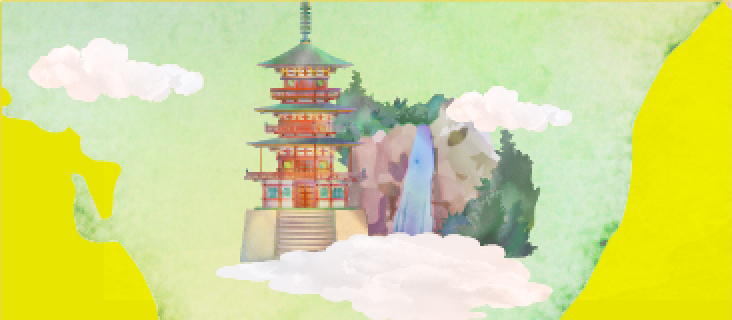The Tragic Prince's Story
The Kiiji Route, the western route of the Kumano Pilgrimage, passes along the sunny southern seaside road and then dips into the heart of the mountainous region from the Tanabe and Shirahama areas. It is a heavenly pilgrimage route all the way to Shirahama. Shirahama is known for its snow-white Shirarahama Beach, which was a popular hot spring resort for about 1,400 years before the Kumano Pilgrimage became popular, and emperors used to come here in long processions. Even today, the area is a resort for visitors who come for its swimming, hot springs, and famous kue cuisine, but old historical books tell the history of the area as the setting of a sad story.

During the reign of the Empress Saimei, the son of the previous emperor, Arima-no-miko, had mental illness at the age of only 19. In fact, he pretended to be ill in order to
escape the power struggle in court. One day, the Prince said to the Empress, "The other day, I went to the hot springs of Muro. Just seeing that wonderful place cured me of my
illness”.
The hot springs of Muro are the Yuzaki hot springs in present-day Shirahama. Hearing this, the Empress was so delighted that she immediately took her subjects to
visit the Shirahama hot springs the following year. The capital was empty. There, a man named Soga no Akae, who had been looking after the capital, whispered bad things about the
emperor to Arima-no-miko. The prince, who was dissatisfied with the current political situation, was glad to have someone on his side.
He said, "The time has come at last to raise the army!”. However, this was a trap. Prince Arima's plan to raise an army was immediately announced to the empress. Arima was immediately captured and escorted all the way to Muro for deliberation. He was then to be hanged at Fujishiro-zaka, in present-day Wakayama City. The prince was escorted westward from Shirahama along the coast at a slow pace. On the way, he composed a waka poem at a place called Iwashiro.
“I tied the branches of Hamamatsu in Iwashiro together. If I am safe, I shall return and see it again.”
Since ancient times, pine trees have been believed to be special trees to which deities attach themselves. In ancient times, the tying of grass and trees was a magical act to keep the soul in place. In other words, Prince Arima wanted to keep his soul in Iwashiro. The reason why Prince Arima composed this poem not at the place of execution but at Iwashiro on the way to Kumano is that Iwashiro was the entrance to Kumano, and in order to enter the area safely, he kept his soul at its boundary.
In present-day Shirahama, there is a "Miyukinoshiba-monument", which is said to be the site of the palace when the emperors visited. Right next to the Miyuki fountainhead, which is said to be the oldest fountainhead in Shirahama, the white steam and the smell of sulfur fill the air.
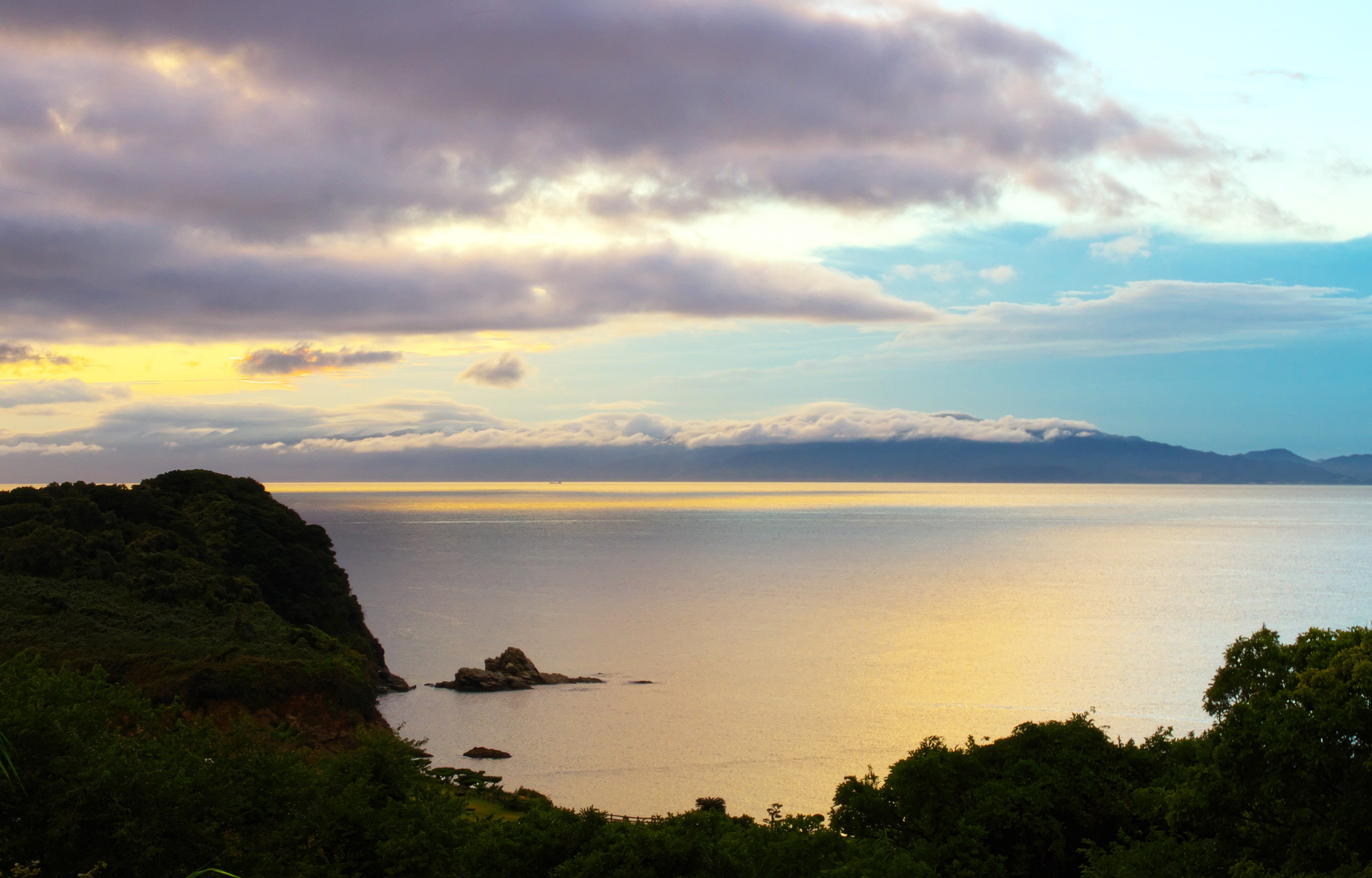
Because the Kii Peninsula has many scenic spots, emperors in ancient times took their subjects to the area and had poets compose poems about the scenery. It was believed that by composing poems, the local gods would be pleased and accept the emperor's rule. Wakanoura, located just north of Fujishiro-zaka where Emperor Arima was executed, is a scenic spot where many waka poems were composed. The gentle mountains surround Wakanoura Bay, plovers sing on the mud flat at the mouth of the Wakagawa River, and the mirror-like surface of the water ebbs and flows as if the gods were breathing. Emperor Shomu was so moved by the scenery when he visited this place about 1,300 years ago that his attendant, the poet Yamabe no Akahito, composed the following poem.
“When the tide comes in at Wakanoura, the mud flats disappear, and the cranes fly toward the reed beds, cawing as they go.”
This song was loved by Japanese people until later generations, and Wakanoura became a sacred place for waka poetry.
After visiting Tamatsushima Shrine, which enshrines the
god of waka poetry, visitors can climb Tengu Mountain behind the shrine for a panoramic view of Wakanoura Bay. A beautiful spit of sand lined with pine trees stretches out for a
long distance, and as the tide recedes, mud flats gradually appear. Then it rises again without a sound. Here are the same workings of nature as in the ancient songs.
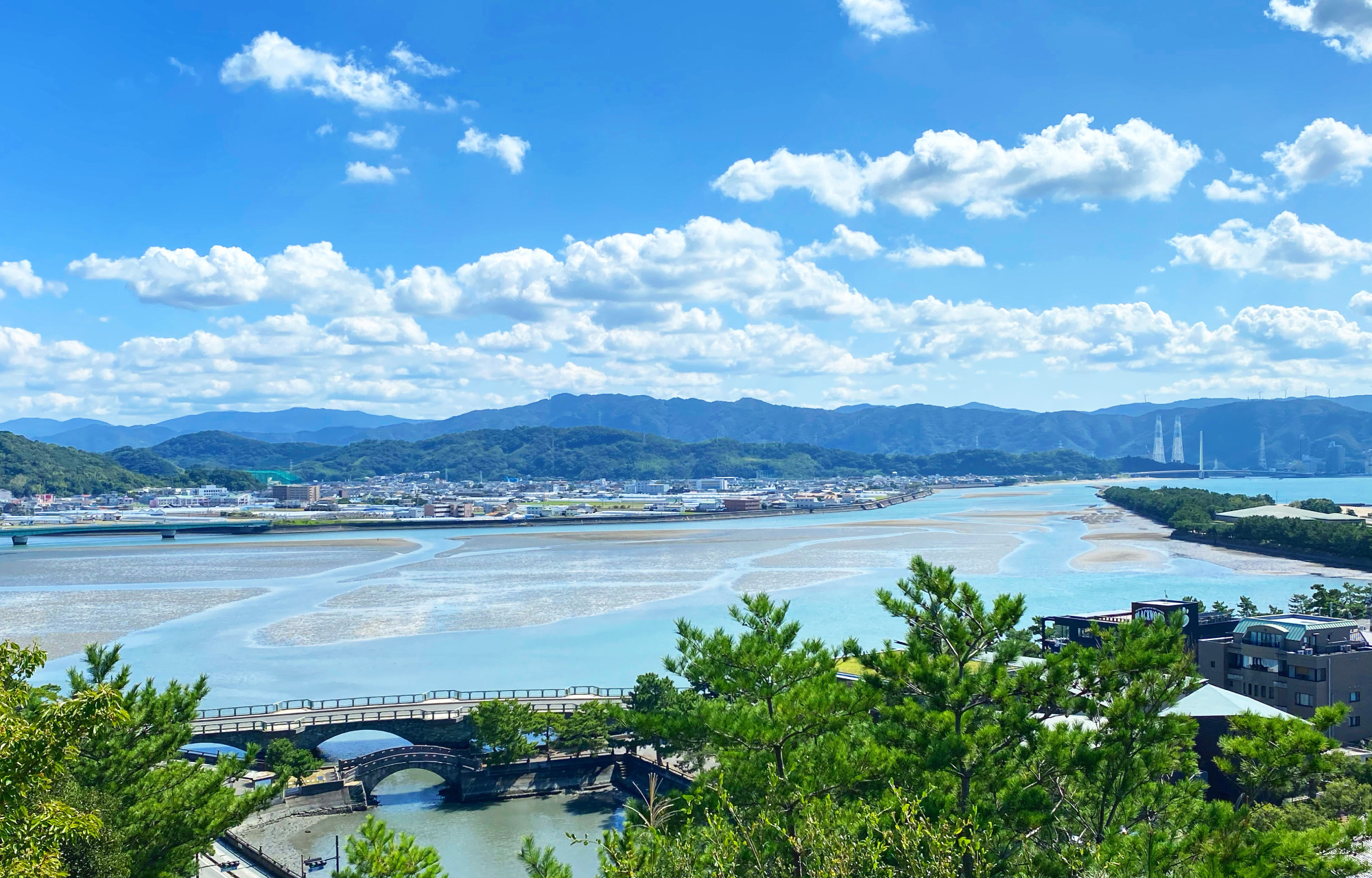
A woman in love becomes a serpent
Gobo City, located in the southwestern part of the Kii Peninsula, is another place where Kumano pilgrims used to come and go.
About 1,000 years ago, a young monk was on his
way to Kumano when he stayed at a place called Manago. The woman who owned the inn was so hospitable that the monk became suspicious, but he was so exhausted that he fell asleep.
Then the woman crept into his bedroom.
She said, “I have fallen in love with you...”
The monk was so surprised by her passionate words, that he said to her, "I have
long dreamed of paying homage to the god of Kumano, and I have made the arduous journey with great devotion. I cannot break the precept and spend the night with a woman here and
now.”
Still, the woman continued to press him.
“OK, I will do as you wish when I have completed my pilgrimage safely”, he said.
With this promise, the monk
departed. However, no matter how long she waited, the monk did not come. The woman asked people on the street.
She was told that if there is such a man, he had passed by
here and gone far away.
The woman became furious.
She knew she had been tricked.
As she chased and chased and chased, her form gradually transformed into a snake.
The monks noticed the woman's hideous appearance and fled to a temple called Dojo-ji. When the monks at the temple heard what had happened, they lowered a large temple bell and
hid the monk inside.
Slither, slither, slither. The serpent climbed up the stone steps of Dojo-ji Temple. When the serpent found the bell, it wrapped itself around the bell
and emitted flames from its body. Unable to resist, the monk was burned to death inside the bell.
Slithering, slithering. The serpent licked its tongue, tears spilling from
its eyes, entered the Hidaka River flowing in front of the temple, and disappeared.
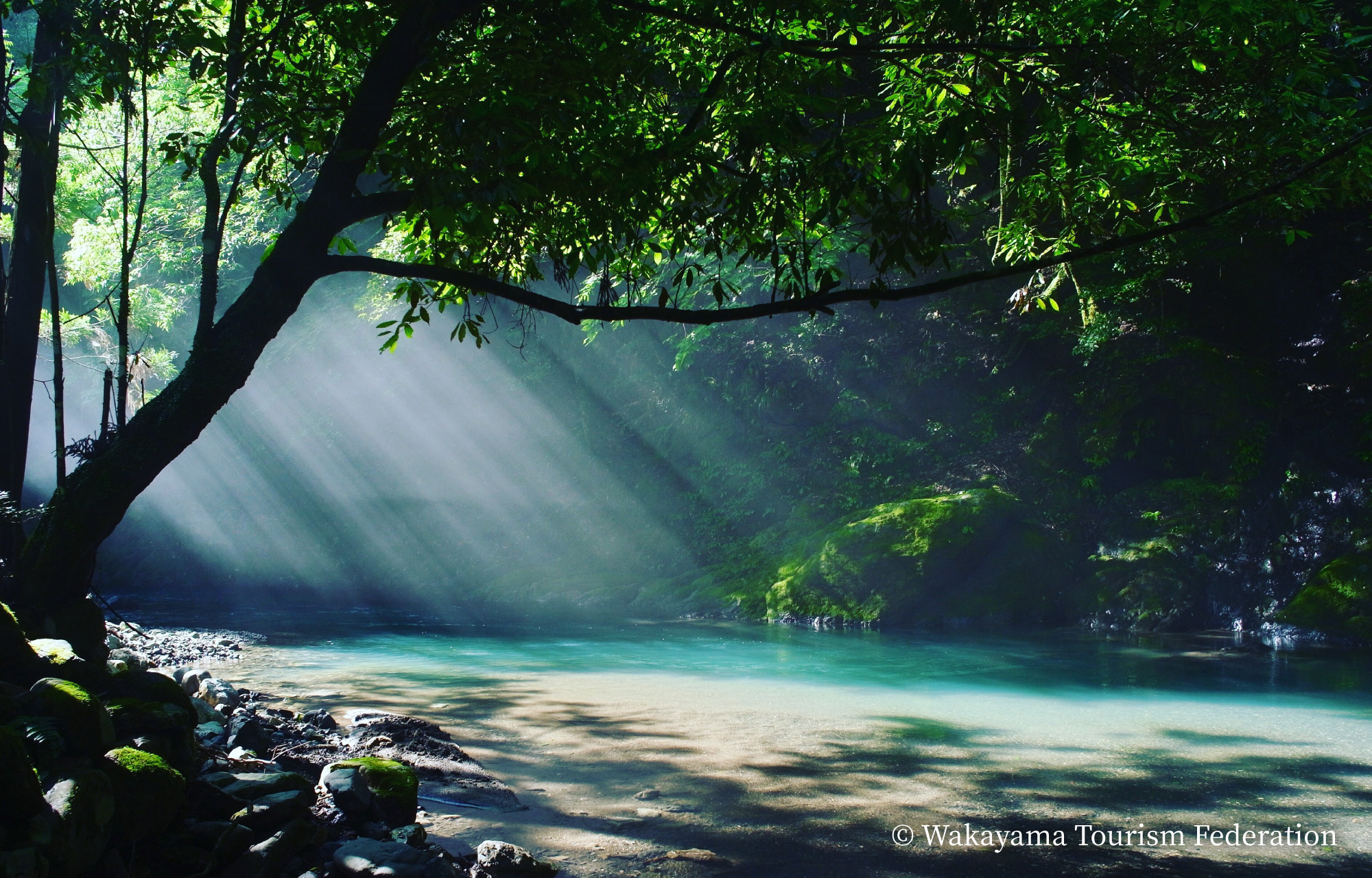
The present Dojo-ji Temple still does not have a bell. According to tradition, the burnt bell and the body of the monk are said to be buried in a stone monument called "Anchin-zuka" in front of the main hall. However, recent excavations have revealed that the belfry was located at the cherry tree to the west of the main hall and burnt soil has also been found. The remains of the belfry may have been the result of a fire, but they are a vivid reminder of the traditions of the temple. The Hidaka River still flows nearby, and it is easy to imagine a serpent entering, writhing in unfulfilled love. In ancient times, there were legends throughout Japan of sacrificing a maiden to a water goddess to stop a river from overflowing, and some believe that the serpent at Dojo-ji Temple may have been a sacrifice to the Hidaka River.
The story of Dojo-ji Temple, in which an uncontrollable love turns a woman into a snake, has attracted people's hearts, and the monk's name became Anchin and the woman's name Kiyohime, and they have been loved as works of classical performing arts such as Noh and Kabuki. Today, the story is told using picture scrolls in the Engidō Hall on the Dojo-ji Temple grounds, where the story is told in a pictorial sermon.
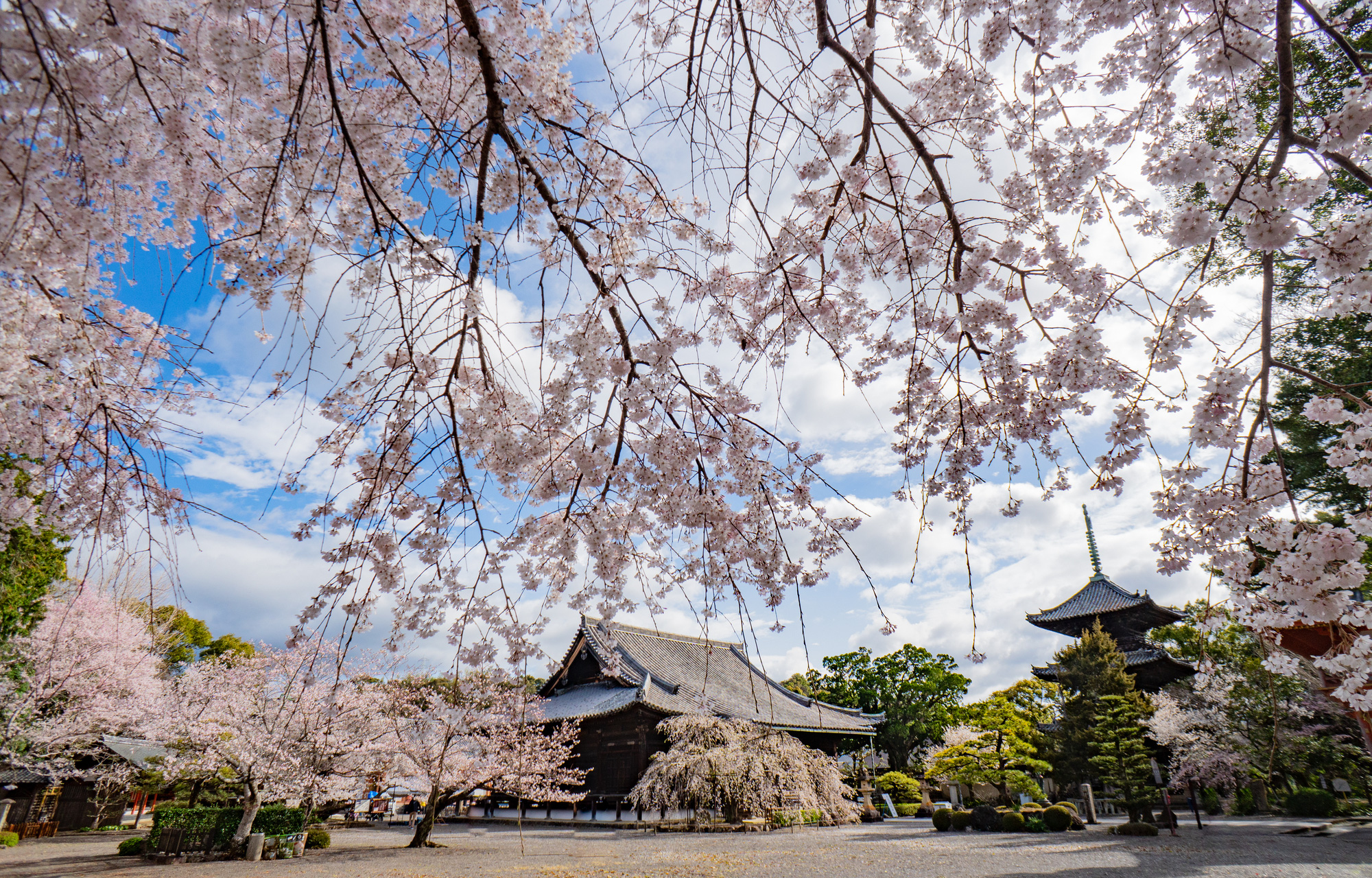
Love Letter from Myoe Shonin
Yuasa-cho, Arita-gun, is a town that retains vestiges of the former Kumano Pilgrimage inns. A stone monument that was used as a guidepost during the Edo period stands in Yuasa-cho, Arita-gun, and it reminds us of the bustle of pilgrims in the past. The town is also known as the birthplace of soy sauce, and by the time the monument was erected at the end of the Edo period, there were 92 soy sauce brewers in the area. The town has been selected as an important traditional building preservation district. A stroll through the old streets is like stepping back in time to the Edo period. Jinsen-ji Temple, located in the center of downtown Yuasa, is thought to have been the place where the emperors stayed during their Kumano pilgrimage 1,000 years ago, making it an ancient pilgrimage route.

About 900 years ago, a Buddhist priest named Myoe Shonin was born in the immediate vicinity of Yuasa Town. An anecdote tells us that Myoe Shonin was a man of great human charm,
and many people still admire him today. After the death of his parents at an early age, Myoe left Kyoto to become a monk, but returned to his hometown in the winter of his 23rd
year. In order to get away from the secular world and to practice a rigorous ascetic training. He retired to Mt. Shirakami and cut off his right ear to make up his mind.
He
said, "Buddha cut off his hair in order to renounce the secular world, but nowadays it is common for monks to cut off their hair. In order to be close to the Buddha, I have to
cut off something else. If I cut off my eyes, I cannot read the sutras. If I cut off my nose, snot will run down my nose and contaminate the sutras. With the ear, even if I cut
it off, I can still hear the sound."...... He thought this and cut off his ear. What kind of view did he see after enduring the pain.
There are two sites of Myoe’s ascetic
practice on Mt. Shirakami, the West Shirakami site overlooking Yuasa Bay, and the East Shirakami site where he moved to a deeper part of the mountain. Both are tough climbs, but
they allow visitors to experience the firm resolve of Myoe.
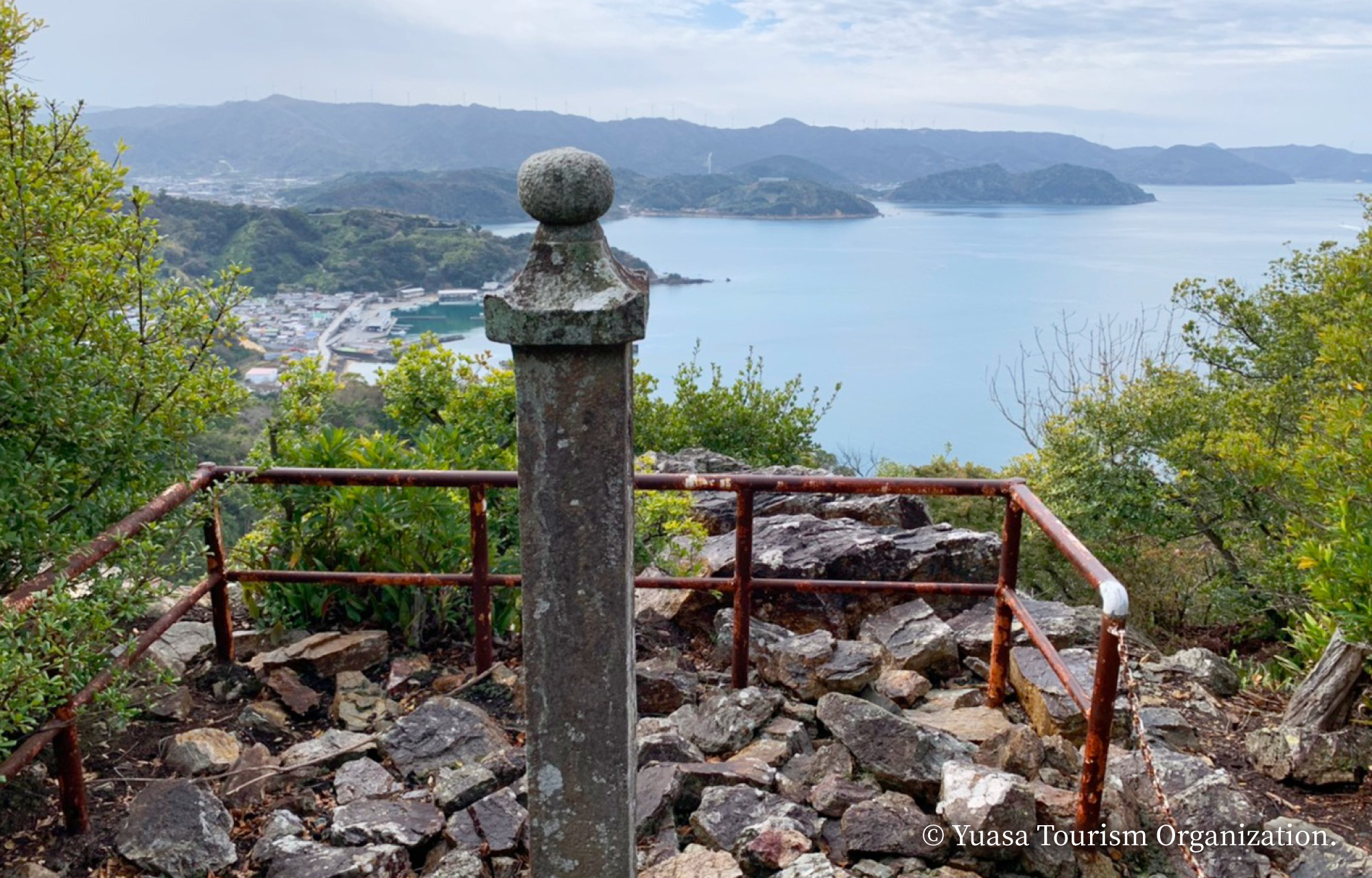
After undergoing rigorous ascetic training, Myoe once again headed for Kyoto, where he built Kozan-ji Temple in the mountains called Togano-o. At this time, the Jokyu Rebellion
broke out, and the warlords on the losing side fled to Togano-o. The generals on the losing side fled to Togano-o, where Myoe hid them, and he was brought before the victorious
generals. However, he said in a dignified manner, "In Togano-o, even birds and beasts are never killed by hunters. And moreover, humans are never killed. If you do not accept
this principle, please cut off my head."
The general was said to have been captivated by Myoe's pure and innocent spirit. Furthermore, Myoe protected women and children who
lost their husbands in this rebellion and even built a nunnery.
Myoe also left behind the words, "One should have the seven characters of 'arubekiyoha'". The meaning of this
phrase can be interpreted in a variety of ways, but it can be interpreted as saying that there is no absolute right thing to do, but that one should think carefully about what is
best for one's current position and act in accordance with that. It seems to me that he is encouraging people to relax and do their best in their diverse lives.
In his later
years, Myoe donated a temple called Semui-ji Temple in the town of Yuasa, which still maintains modest grounds amidst a field of mandarin oranges. As you walk up the approach to
the temple, you can see the lush waters of Yuasa Bay on your left. The small islands floating in the distance are Taka-jima and Mokari-jima. Myoe sometimes traveled to these
uninhabited islands to practice his asceticism. One time, when he was on a trip, he sent a letter to Mokari Island, saying, "Dear Mokari Island," and asked, "Have you been well
since then?”It began, and then went on. "I have not been able to forget the time I spent playing on the island and I miss you, but I haven't had a chance to see you again..." It
was like a love letter.
The calm sea of Yuasa nurtured Myoe's kind, humorous, and clear heart. The color of Kiiji Route, which gave birth to rich nature and people, is blue.
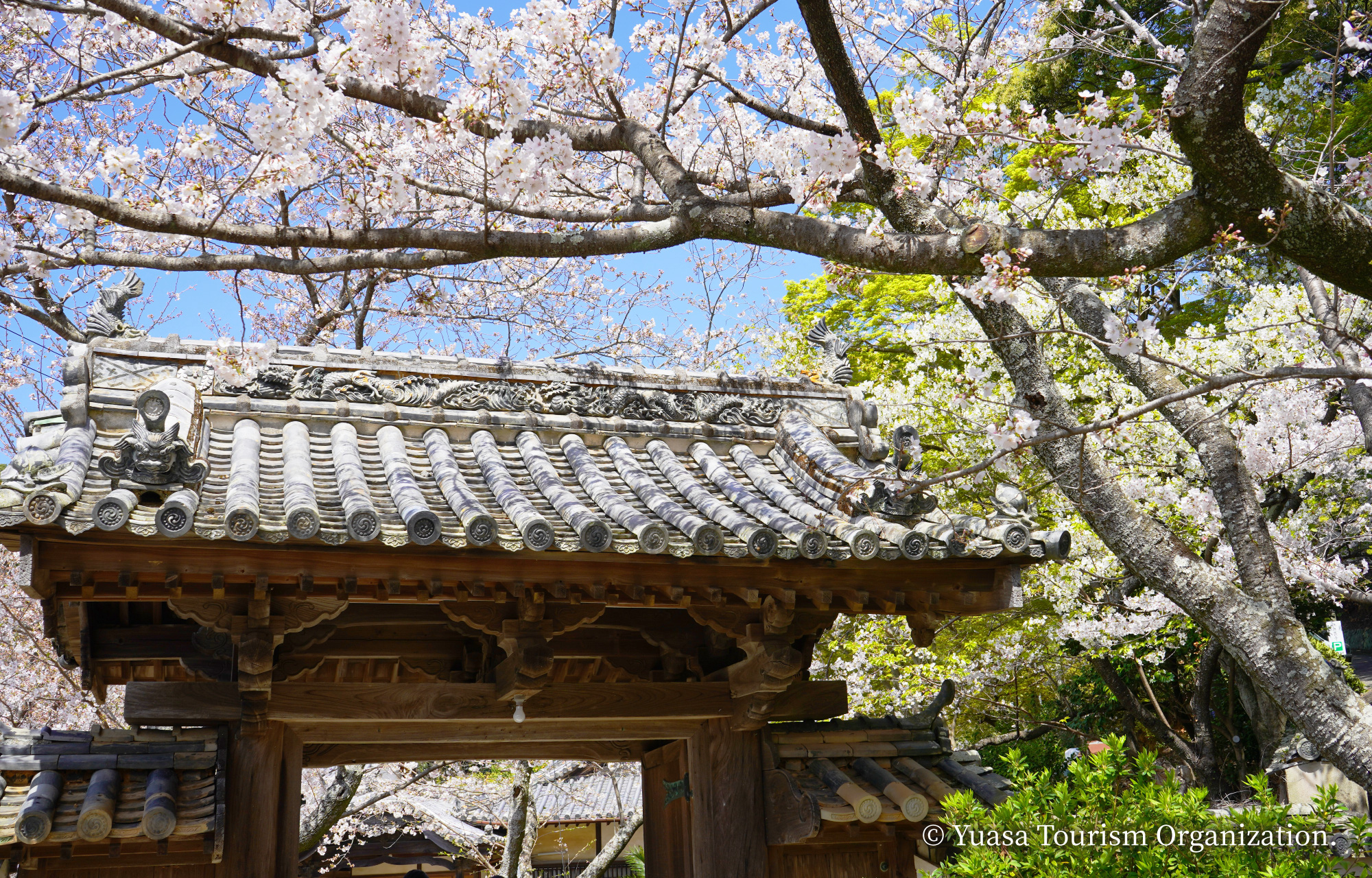
Kiiji Route Quiz QUIZ
Q: The stone steps leading up to Dojoji Temple are designed to be easy to climb and easy to descend by using optical illusions. In which way has this been devised?


